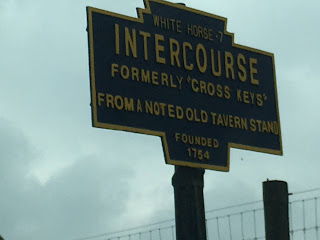 |
| Our view from Santee Lakes KOA |
When I booked this trip last spring, the closest place I could find to Congaree National Park was a KOA in the Santee Lakes area. This put us about 30 miles from the National Park, which seemed close enough and our KOA experience has been consistently good, so it felt like an OK plan. When we checked in to the KOA, two young men escorted us to a site without a sewer hook up. Since they didn't seem full, I asked if we could have a full hook up site. One escort called in my request and they smiled and drove us to a different site. Not only did we get a full hook up, we got this fabulous view of Lake Marion.
 |
| Santee Lakes State Park |
Then I asked our escorts what we might like to see in the area. One of them looked at me and said, "We're in the middle of nowhere, there's nothing to do out here". Nothing to do out here. We're right next to a National Wildlife Refuge and a South Carolina State Park. So I thanked them, finished our set up, took out Google Maps, and we took off to explore the Middle of Nowhere. Sadly, the wildlife refuge, which was a great drive and had interesting information posters at its entrance, was closed for a special hunt. From there, we explored the town of Santee and then headed out to Santee Lakes State Park across Lake Marion from our camp site. The park is mostly heavily wooded camp grounds overlooking the lake along with a Scout camp and several boat ramps. There are nature trails but we were warned again about alligators so we kept the dog (and people) walking to the KOA camp ground. Still, we had another day of lovely weather and great natural beauty.
The next day, we headed out to Congaree National Park, half way between Santee and Columbia SC. The park occupies 26,000 acres and is "the largest remaining tract of old-growth bottomland hardwood forest in North America" according to their Self-Guided Boardwalk guide brochure. The boardwalk makes a 2.4 mile loop at the
 |
Congaree Visitor's Center and Gift Shop
|
Visitor's Center and the guide tells the story of the park's contents and history as you traverse a variety of subtly different ecosystems.
In addition to the boardwalk, there are woodland trails, primitive campgrounds and the Congaree River which can be kayaked or canoed--if you don't mind spiders or snakes dropping into your boat according to an online review. Alligators swim the river as well. If you love history and old trees, however, the risks might be worth it. The park is home to 15 of the world's largest trees in their species, including a 167 food Loblolly Pine. Some of the cypress trees are over 1000 years old, and ancient Tupelo trees mingle among them. There are also abandoned moonshine stills and evidence of "maroon" settlements--communities formed by escaped slaves. Dense vegetation
 |
| Boardwalk |
and twisted roots provided safety to those not wishing to be found and were the basis for building such an extensive boardwalk. It was a remarkable experience and thankfully, the only alligator we've seen this trip was from an overlook as it swam the Congaree River.
The next stop is a stark contrast--urban Asheville. Our campsite will be on the French Broad River and my favorite stretch of city greenway. And free of alligators...
 |
| Ancient Cypress |
 |
Dwarf Palmetto
|
 |
Ruthie's alligator photo
|
 |
Campground Sunset
|























































